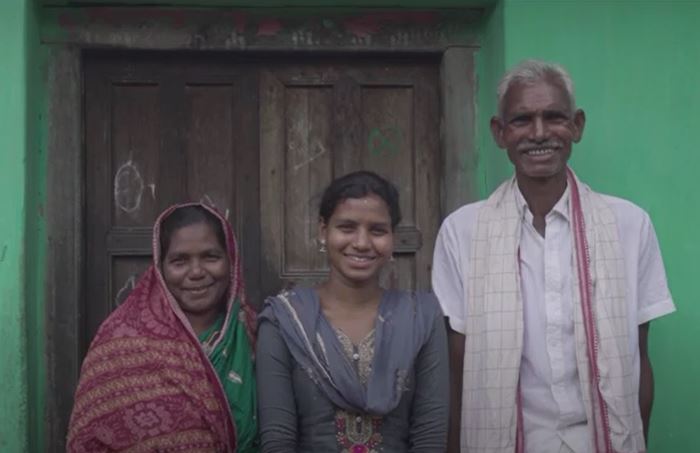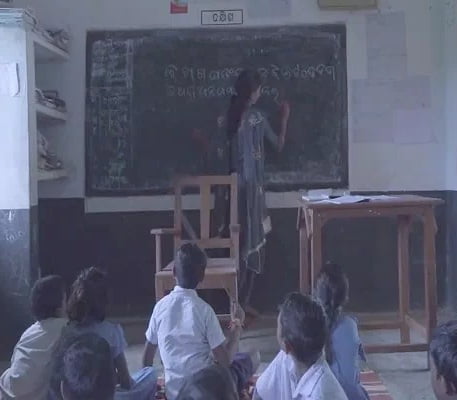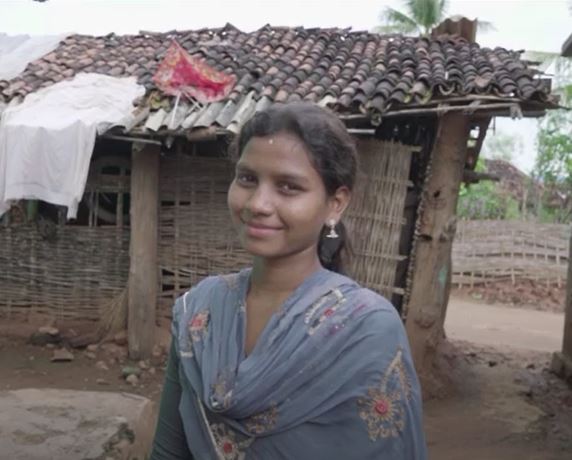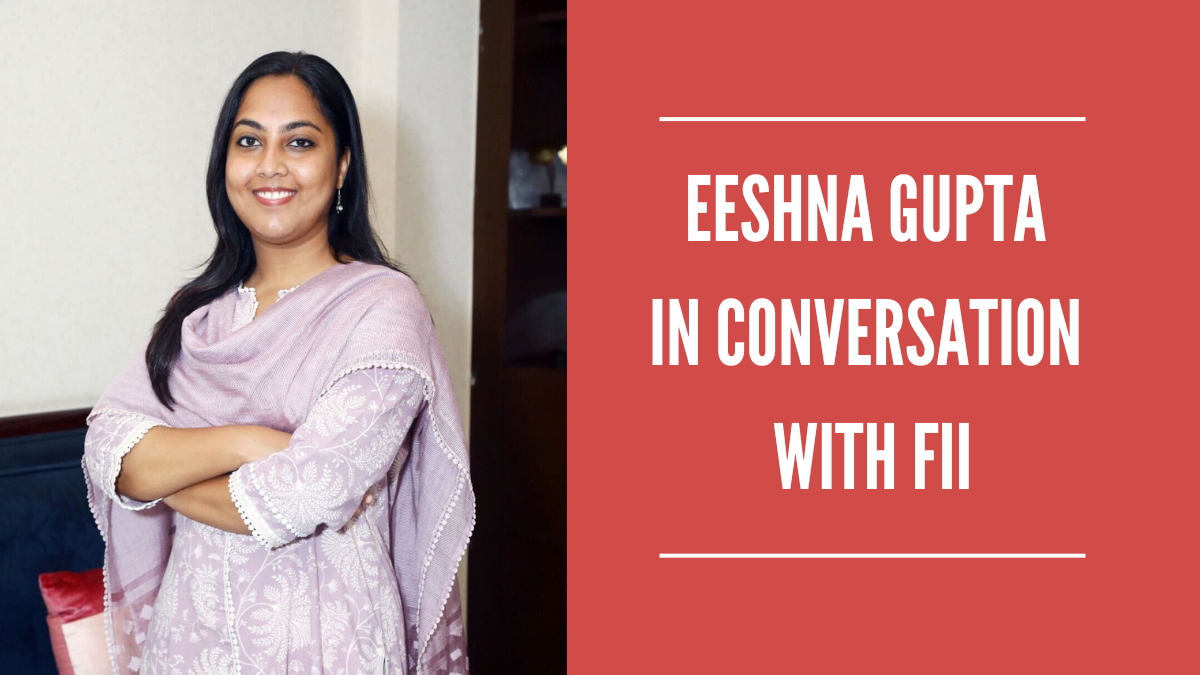Deepanjali Patra defied societal norms and patriarchal expectations to pursue her education and become an educator. Belonging to the Gond community, Deepanjali, like most other girls in her village was expected to get married soon after she finished tenth grade, but Deepanjali took a stand against this proposed child marriage and went on to graduate from high school and work as an educator.
In the village of Borbhata in the Kalahandi district of Odisha, 20-year-old Deepanjali Patra teaches at the local school today. Working as an educator for the past three years, Deepanjali has a nuanced understanding of the barriers standing in the way of young girls’ school enrolment and attendance and the many ways in which we can address and eliminate these barriers and achieve true parity when it comes to education.
Today in conversation with FII, Deepanjali talks about her fight against early marriage.
FII: Tell us about your childhood growing up in rural Odisha.
Deepanjali Patra: I come from a small village in Odisha called Borbhata, we belong to the Gond community. As with the rest of the country, our community certainly follows patriarchal norms and women are expected to adhere to strict gender roles and are disallowed from exerting agency or autonomy. Despite being the daughter of one of the village leaders, acquiring an education has been an uphill task; something that is true for millions of girls in India and across the world. Our village has a school, but most girls are only allowed to study until they are 14 or 15 and then they are married off.
When I finished tenth grade, talk of my marriage began and my family insisted I give up on my education. But I wanted to study, and I refused to get married. At the time, only two girls from my village had ever graduated from high school, but I was determined. My brothers were allowed to study, and it was only fair if I was too. My family finally agreed and I was able to complete my high school education in its entirety.
Also read: Raising Girls’ Minimum Age Of Marriage Isn’t As Progressive As You Think
FII: You resisted child marriage to complete your education, and you’re an educator today. Tell us about your journey.
Deepanjali Patra: Once I finished high school, I was once again expected to get married. I was 17 at the time. Women working outside of the home isn’t encouraged here, so my family saw marriage as the natural next step. But during this time, a teacher was needed to teach the young children of our village at the local school and I saw an opportunity there. This was a paid position and would bring additional income into our household, so my family acquiesced.
I teach the children in the morning and the evenings and my work as an educator is very fulfilling and I do it to this day. Over the years, more and more young girls have started enrolling and attending. They now receive free books and other learning aids, which has gone a long way in improving enrolment numbers since it eases the financial burden on families.

FII: I understand Oxfam India has various initiatives and interventions that benefit rural communities, especially women and young girls of these communities. In fact, Oxfam has been instrumental in your journey of becoming an educator. How so?
Deepanjali Patra: Oxfam has truly been instrumental in my journey of becoming an educator. They came to my village in July 2017. They met with the girls of the village and were educating them about child marriage, early marriage, and domestic violence. At first, this initiative was met with resistance by our community because these things were accepted to be unchangeable and insurmountable social realities.
I began attending these meetings, which further strengthened my resolve against child marriage. I learnt that the law forbids child marriage and I informed my family that I will not be getting married young; in fact, Oxfam representatives met and spoke with my family and educated them on the ills of early marriage. With this, they became increasingly supportive of my academic and work-related pursuits. Women should work outside the home if they so choose, they should do fulfilling work: this sentiment is slowly, but steadily, becoming more popular in our community. I, for one, want to join the Odisha police force and my family is now supportive of this pursuit, while I study and train for it.
FII: Speaking of the Gond community, do you believe that apart from social norms, a major obstacle for women and girls’ access to education is economic barriers? How do you propose they be eliminated?
Deepanjali Patra: There are definitely economic barriers to girls being able to access education. In rural communities, families tend to spend their limited means on the education of boys because they think this will pay off later when they bring in additional income into the household. On the other hand, since girls working outside of the home is frowned upon and most girls are married off very young, families are wary of spending money on their education.
A lot of families in our community struggle financially as there isn’t enough work for everyone. This results in them having limited means, so given their economic reality, they are unable to teach all their children and have to choose which ones to send to school, and most often, they choose to educate their boys.
As for what can be done to change this, as a starting point, the government can start by providing free, quality education across all rural communities in India. This would go a long way in increasing school and college enrolment and attendance for young girls. There also should be appropriate training provided to make sure that these girls are employable in an increasingly competitive job market. If their employment prospects increase, families would be incentivised to invest in their girls’ education.

Further, the quality of education being provided should be a primary point of concern. Our village has a school, but the education there is sub-par. A lot of girls don’t bother attending because of this. Free education and making education accessible to all is only as good as the quality of said education.
Because of the quality of education provided and due to being unable to afford the fees, a lot of girls in our village continue to be denied an education. And for girls who want to go to college after graduating high school, our village doesn’t have one. There is a college in nearby Rampur, but due to a combination of various socio-economic factors, they are unable to enrol there either.
FII: As an educator who has close ties to the community, what changes and interventions, in your opinion, are necessary to revolutionise societal attitudes regarding women’s education.
Deepanjali Patra: The kind of initiatives Oxfam takes up, especially those relating to the youth of communities like mine, is certainly a great starting point. I think any initiatives to revolutionise societal attitudes regarding women’s education should be youth-centric. If we educate our girls and if we incorporate an understanding of gender equity at the school level, this will allow the youth to view education as a non-gendered pursuit that is just as important for girls as it is for boys. And if we inculcate this understanding in children and young adults, that will have far-reaching consequences into the future and will re-shape social structures and eliminate social barriers that stand in the way of girls’ education.

FII: Do you see positive social changes around you? Especially in terms of education and early marriage for women and girls.
Deepanjali Patra: I certainly do see changes in this regard. Speaking of my community, I have seen tremendous change in the past few years. Most girls in our village are now only married after the age of 18 and some even in their early or mid-20s. The number of young girls pressurised into early marriages by their families has significantly decreased.
More number of girls are also enrolling in schools and colleges here. I was the third girl in my village to be enrolled in Grade 12, and currently, 8 girls are enrolled in Grade 12 in our local school. And a lot of girls go on to work outside of the home after they complete their education.
Women have also gained financial independence. Since they make their own money now, they are free to spend it how they see fit, which means they are now able to spend money on themselves, not just to fulfil their desires, but they are also able to prioritise their nutrition, health, and wellbeing. There have definitely been great strides and quantifiable results and with more work and commitment to women’s equity, I am certain no girl in this country will be left behind without an education.
Also read: In Conversation With Dr Sunish: CEO Of India’s First Gender Park
Author’s note: Responses have been edited for clarity. All responses have been translated to English from Hindi.
Featured Image Credit: Oxfam India
About the author(s)




